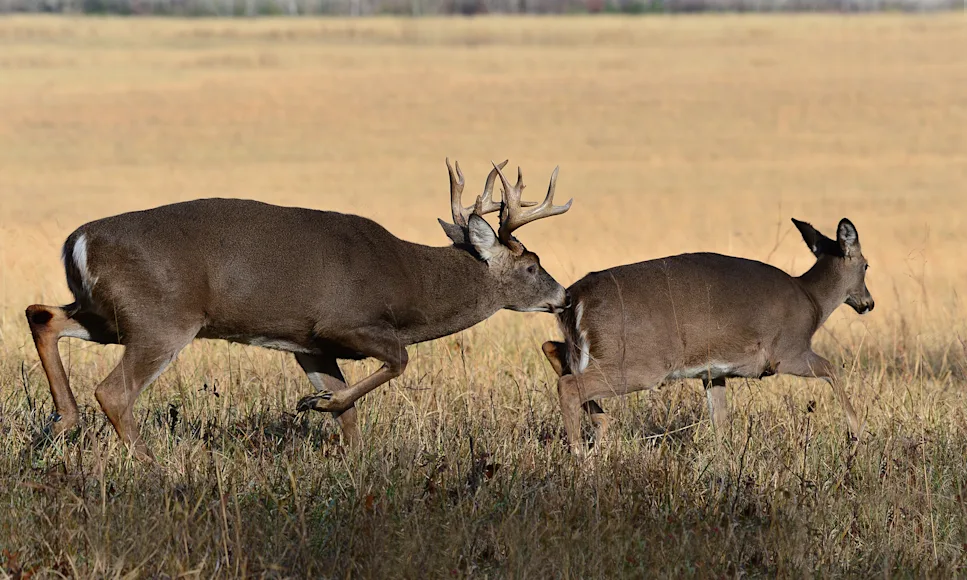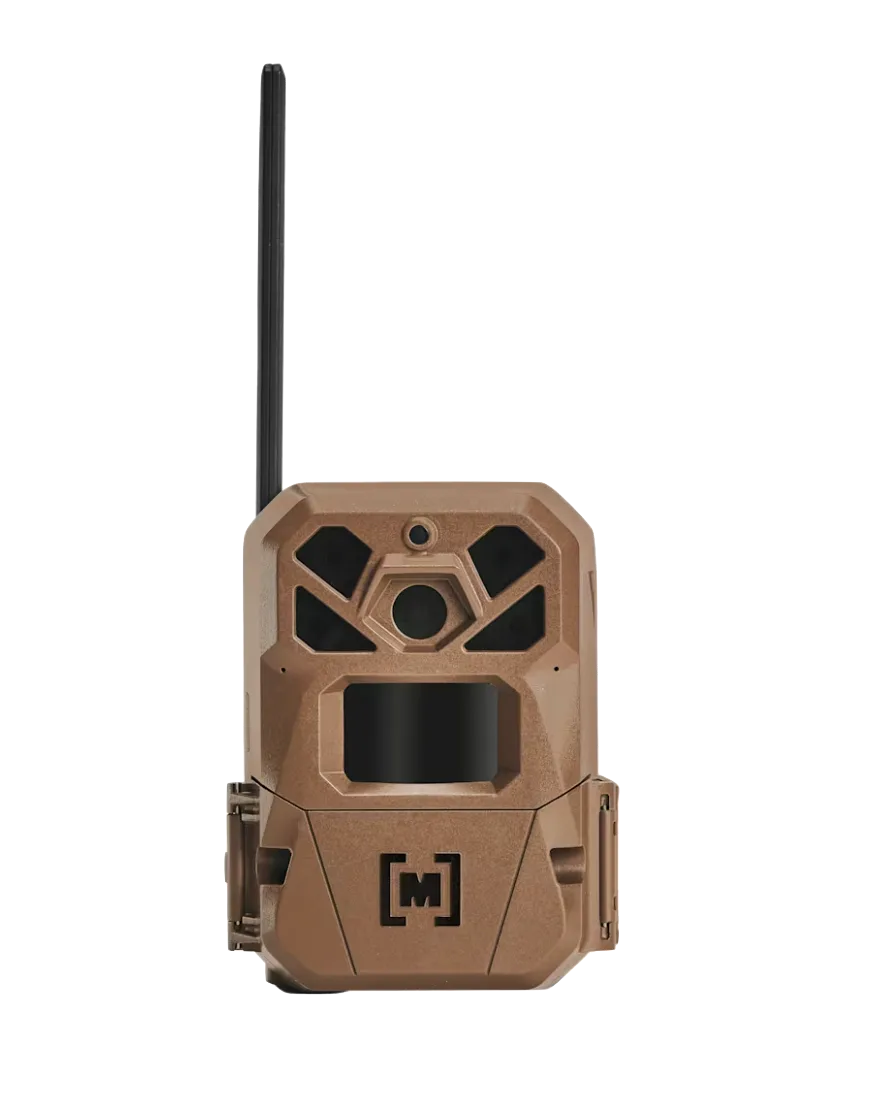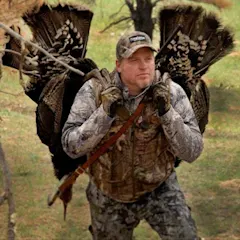We may earn revenue from the products available on this page and participate in affiliate programs. Learn more
This is when things get crazy—when does crash through the timber and bucks follow in a train, tongues lolling, while deep grunts echo through the trees in every direction. All while your head is on a swivel. This Sunday should coincide with the peak of the chasing phase throughout most of whitetail range, and you're not going to want to miss it.
For bowhunters, the madness of the chase phase is a mixed blessing. On on hand, you're going to see a lot of action. On the other, it can be a tough time to get a shot. That said, you can up your odds considerably by just sitting in the right place. If your gun season is open this Sunday, well, you must be living right, because you couldn't ask for better hunting conditions. November 9th is also a red-moon day, if that means something to you. All in all, it should be a great day of hunting no matter what you're carrying, but if you're allowed to carry a gun, you should be chomping at the bit to get into the woods.
Related: The 7 Best Days of the 2025 Whitetail Rut
Rut Stage: Chasing/Early Breeding

This phase of the rut is very straightforward: Enough does have now come into estrous that bucks have little doubt that it's go-time. The switch has flipped and now every buck in the herd is hell bent on finding a mate. They may check a scrape or make a rub here or there. They may have to fight for breeding rights. But all of that takes a back seat to running down every female deer they see, whether she is ready to breed or not.
The only exception is when a buck finds a ready doe and is busy actually breeding. As soon as he is done with one doe, however, he'll be off again to find another. And plenty of does are not quite ready. Peak breeding is still days away in most area, and that leaves the majority of bucks covering tons of ground and running all through the timber in search of a mate. In a nutshell, this is the phase we've all been waiting for—the hottest, most frenetic buck activity of the year.
November 9 Morning Hunt Plan: Wait It Out in a Macro Funnel

The best strategy during the craziness of the chasing phase is as straightforward as the phase itself: Park yourself in a funnel and wait. If there is ever a time to sit in one place all day, this is it. The truth is, any good funnel or pinch point that your scouting or hunting observations has told you is getting traffic right now should be on fire today, especially if that funnel connects known doe bedding areas.
Bucks are going to spend Sunday harassing does heading back to bed in the early morning and checking one doe bedding area after another throughout the day. If you're not sure where to sit, look at a satellite image of your property and pull back so you can see the surrounding properties as well. Then look for macro funnels—ridges, saddles, strips of timber, creekbottoms, lake shores, swamp edges, ditches—that will funnel big-running bucks and that connect large swaths of doe-bedding cover.
This is where you want to be today, especially if you are a bowhunter. Gun hunters can get away with watching more open cover in or near a doe bedding area, such as a CRP field or a brushy draw. But because it's tough to call bucks into bow range when they're locked in on chasing does, bowhunters need to be where bucks will cruise past close on natural movement—and a tight funnel or pinch point is just the spot.
November 9 Evening Hunt Plan: Back Off the Buffet
If you can't stand to sit in the same spot all day, first off, I don't blame you. I did it when I was younger, but these days it tends to give me existential angst. I can hunt pretty much all day, but I need to switch things up in the middle. If you do, too, it only makes sense to move to a major doe feeding area for the afternoon hunt. If you're a gun hunter and your scouting tells you that does are still hitting feed fields and plots before dark, go ahead and sit right on the groceries.
If you're bowhunting, or if deer are hanging back in the timber until dark or near dark, as is often the case at this stage in the season, you'll be better off sitting in a staging area just off the feed or a funnel or pinch point leading to the feed. The edges of major food sources tend to have paralleling trails that deer in general use to scope out a field or plot before entering, and that rutting bucks use now to scent-check a field for does without exposing themselves. That's what you want to look for.
Any paralleling trail that shows good buck sign and allows you to set up with a favorable wind is a solid bet. Don't worry if the sign isn't smoking fresh (remember that bucks aren't spending a lot of time freshening sign right now); it still tells you that this is a trail a buck or bucks like to travel. Ideally, the trail would run along the downwind edge or off a downwind corner of the feed, where bucks will swing by to scent check. The absolute perfect scenario is to set up near the top of steep downhill slope or the head of a wash just inside the woods, so that your are downwind of the paralleling trail and so any deer downwind of you will be enough downhill that your scent will drift harmlessly above them. When you find a spot like this, hang one of your better stands and leave it there forever—because it'll be a go-to spot every year during the chasing phase.
Gear Tip: Get More Cams Out Now
We've mentioned this tip before, but it is worth repeating: Now is a good time to either get more trail cams in the woods or move some cameras off areas that have gone cold—like scrapes, which bucks largely abandon during this stage—and get them into current hot spots. The chase phase doesn't last long, and you need to move fast to get the most up-to-date information.
The places you want to focus on now are major funnels and travel corridors connecting large swaths of ground where you'll catch big-running bucks as they range widely looking for ready does. Another good spot is doe feeding areas, but rather than hanging the camera on an entry trail, back it off and put it in time-lapse mode to watch the whole field or plot. The downwind edges of doe bedding areas are also good bets.
This is a time when a cell cam has a huge advantage over a conventional type, as there isn't time now to make regular runs to pull cards. A good, affordable cell cam like the Moultrie Mobile Edge 3 is the way to go. Or if you're on a tight budget, you can often find great deals on the original Mobile Edge. You want set-it-and-forget-it cams that will send all the latest intel right to your phone—so you don't have to leave your tree stand.
Read Next: Best Cellular Trail Cameras of 2025, Tested and Reviewed



